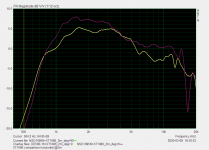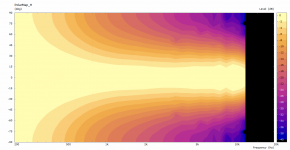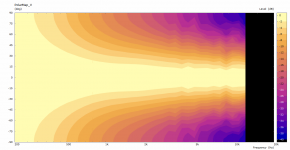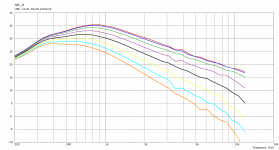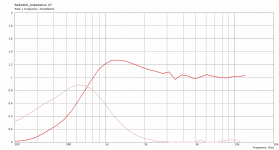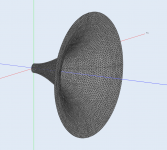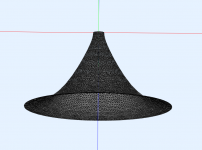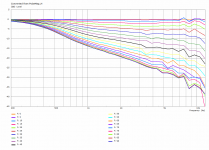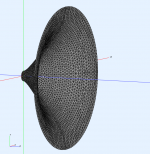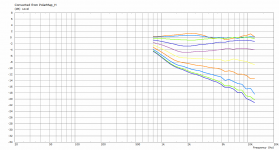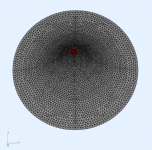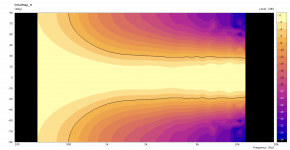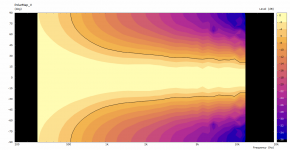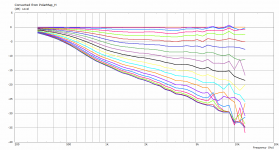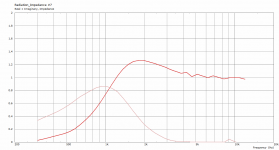Which coverage angles do you have in mind?
I prefer axisymmetric because of the lack of pattern flip and ease of construction, but also like to keep total speaker height below 1.5 m.
I prefer axisymmetric because of the lack of pattern flip and ease of construction, but also like to keep total speaker height below 1.5 m.
It's not so easy as changing the throat angle changes the whole profile. I thought about that several times but always gave up.While considering suitable materials (leaning towards soft plywood), I came to the conclusion that a throat adapter could be useful for switching drivers.
This adapter would allow exchanging drivers with the same exit size, but with different throat angles.
Personally, I'm going to try to make a mould by stacking slices of Wedi boards filled out with Acrylic One
CNC Wedi boards that are hard polystyrene with cement? No MDF?
...It seems a number of ATH4 horns have now been made. Perhaps a separate ATH4 build thread makes sense, in which the practical aspects can be discussed.
This thread can then remain dedicated to the development of ATH4.
--> Acoustic Horn Design - The Practical Way
Can somebody post the ABEC results of a good horn they have simulated?
I'm trying to design a 3cm throat / 30cm mouth one and looking for inspiration 🙂
I'm trying to design a 3cm throat / 30cm mouth one and looking for inspiration 🙂
Can somebody post the ABEC results of a good horn they have simulated?
I'm trying to design a 3cm throat / 30cm mouth one and looking for inspiration 🙂
This is what I would recommend: #1402
It has elliptical guiding curve and circular mouth. The result is remarkably smooth, still of reasonably CD and almost without a hint of narrowing.
If you prefered rotational symmetry because of the ease of manufacturing, this would by my bet: bmc0's waveguide (should be possible to come very close to that shape with Ath)
And of course, there is a variety of promising squarish/rectangular shapes, some of them showed here, several pages back.
If I were ever to use a large format 2-inch driver as a wide-range source, it would probably be with something like this (27" x 14") -
(There are some numerical defects above 3 kHz, probably still due to mesh coarseness, otherwise it should be pretty smooth.)
(There are some numerical defects above 3 kHz, probably still due to mesh coarseness, otherwise it should be pretty smooth.)
Attachments
Last edited:
BTW, this is what I get for a waveguide probably not far from what bmc0 has shown in the other thread (0 - 90 / 10 in an infinite baffle; normalized at 15°). It is stricly axisymmetric so that makes it harder to get rid of the ripple but I think what he achieved is already pretty good for the size.
Attachments
Last edited:
And this would be my waveguide for B&C DCX464 (24" wide x 12.5" deep) - about 60° nominal coverage. Maybe a bit bigger.
Attachments
And this would be my waveguide for B&C DCX464 (24" wide x 12.5" deep) - about 60° nominal coverage. Maybe a bit bigger.
This one is axisymmetric?
Perhaps someone with the DCX at hand (Mark100? 😉) is willing to make a crude prototype according to bmc0's method. A wooden template fixed to a rod may suffice.
The horns in posts # 2073 and # 2076 are particularly interesting because of their depth.
I wonder what the response in the upper octave looks like, since the throat is no longer visible about 30° off-axis.
Given the depth, I am afraid the waveguides will also sound (more) like a typical horn, ie "cuppy".
It is consistent with Holland & Newell's findings: horns with an axial depth > 30 cm are likely identified as horns in a controlled blind listening test, with the exception of multicellular horns.
I wonder what the response in the upper octave looks like, since the throat is no longer visible about 30° off-axis.
Given the depth, I am afraid the waveguides will also sound (more) like a typical horn, ie "cuppy".
It is consistent with Holland & Newell's findings: horns with an axial depth > 30 cm are likely identified as horns in a controlled blind listening test, with the exception of multicellular horns.
- Home
- Loudspeakers
- Multi-Way
- Acoustic Horn Design – The Easy Way (Ath4)
